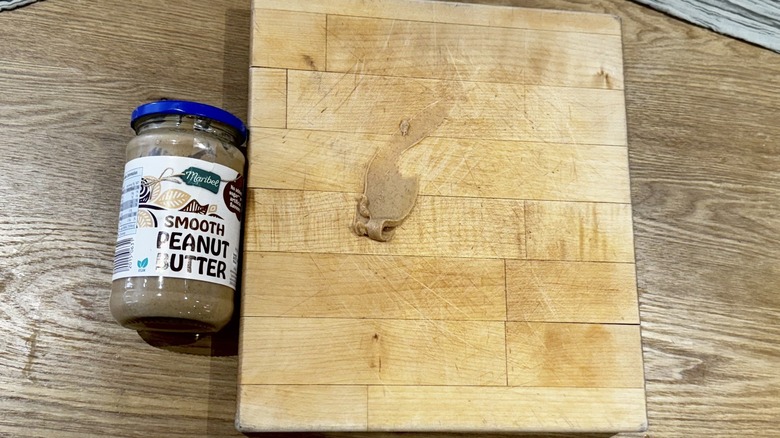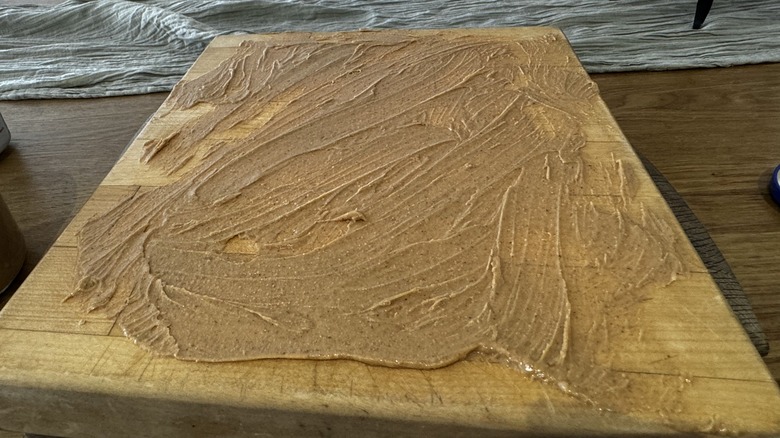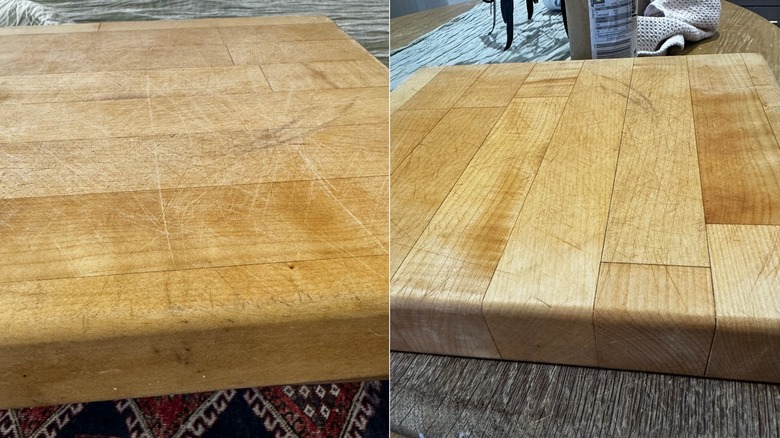We'd Try The Peanut Butter Scratched Wood Hack Again But Not For The Reason You'd Think
If you've got a beautiful coffee table that got a nasty scratch while moving, or the leg of a precious chair clawed up by a feline friend, the situation may feel dire. If you've tried gently buffing it out to no avail but want to see if there's another solution before calling for professional repair, you're bound to look up some easy remedies for scratched wood. A commonly suggested wood scratch repair remedy is peanut butter. Yes, the delicious sandwich spread you pair with jelly is often called to help fill and smooth out scratches on surfaces. Though this is an unexpected use for peanut butter, it makes sense to try it out almost as a natural wood filler that can easily be applied with the excess wiped away — perfect for the DIY novice and anyone who doesn't want to run out to the hardware store.
I was very excited to try the hack out but didn't want to chance using it on a high-end piece of furniture in case it caused any damage. Luckily, I had a very beat up butcher's block cutting board that had seen far better days, and after all, it's meant to chop food up on, so what's the harm in giving it a healthy coating of peanut butter? Well, as long as you're not allergic.
Peanut butter wood filler methodology
Unfortunately, there aren't a lot of detailed instruction on how to use peanut butter to fill scratches, so I did have to experiment a little and take some chances, using two different methods. For the first, since the entire board was covered in scratches and nicks (as a cutting board should be), I decided to give it a healthy all-over coating. I scooped 2 to 3 tablespoons of peanut butter onto the board, then spread it somewhat evenly with the back of a spoon. In the future, I would use far less since this made for a sticky mess. For the second method, I wanted to be more targeted. Though I had already covered a good portion of the board, I left one of the deeper nicks exposed, then covered it in a very thin layer of peanut butter.
Most instructions I found said to let the peanut butter sit for around an hour, but since I used so much, I decided to let it sit for two full hours until the spread felt tacky to the touch. My hope was that this gave the peanut butter time to set and wouldn't just be washed away immediately. When the timer was up, I used an offset spatula to remove the excess peanut butter from the board, which got rid of most of it. I followed up with a very lightly damp rag to eliminate the very thin film left behind, then let the board dry completely for about 30 minutes before beginning my final analysis.
Does peanut butter really work on scratches?
As you can see from the photos, this cutting board was, and remains, very scratched up. Despite this fact, I did think it looked considerably better. There were still plenty of scratches, but they looked far less deep and blended in much better. On the deeper knick that only got a thin layer, the scratch was still visible, but felt very smooth and level. I believe that even though the peanut butter didn't do a great job of actually filling in any gaps, it did help to condition the wood thanks to peanut butter's natural fat and the inclusion of palm oil in this brand's formula. Over time, between cleaning the wooden cutting board with water and soap, the surface had become dried out. Since the etchings weren't dried out anymore, they blended in with the rest of the wood grain.
Ultimately, I think peanut butter makes a better food-grade conditioning wood oil than it does a magical scratch repairing balm. Of course, I wasn't expecting a miracle, and cutting boards are likely to have far more damage than most wooden furniture items. So, it may be fine hack for an annoying coffee table scratch, and at the very least, can stop scratches from drying out. If you do try to condition your cutting boards with peanut butter, be mindful of using it to prepare or serve food for anyone with a peanut allergy.


